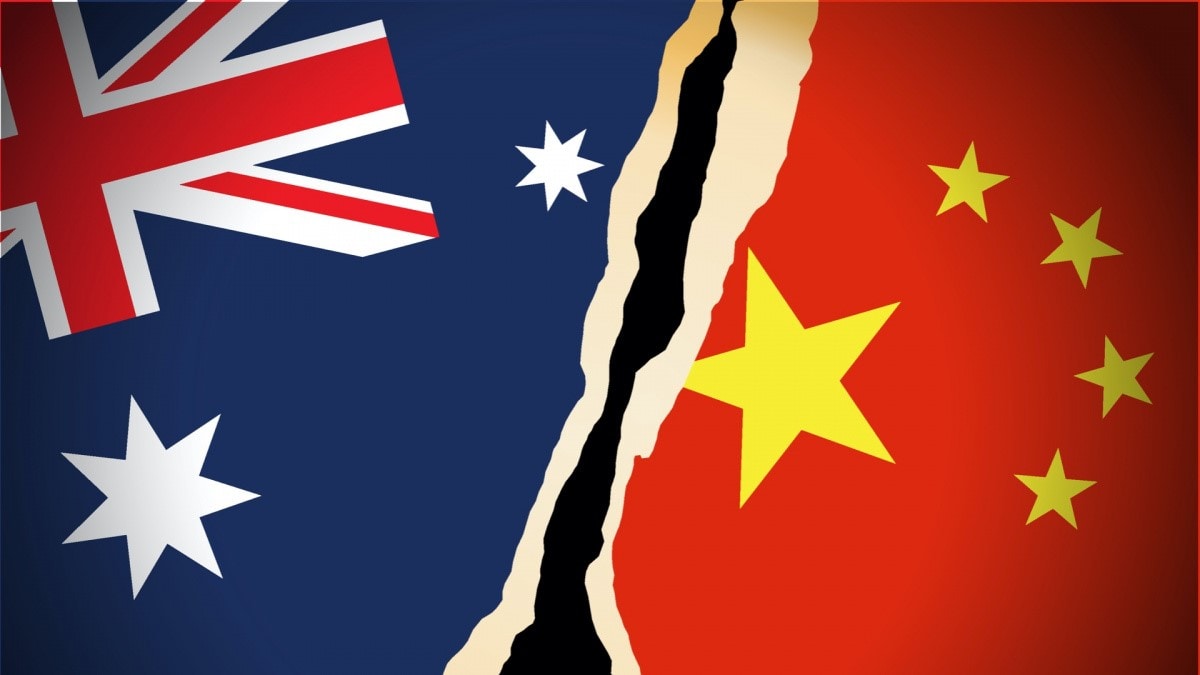On November 18, 2020, the Chinese Embassy in Australia leaked[1] an extraordinarily blunt dossier enumerating 14 grievances that purportedly implicate Australia in "poisoning the atmosphere of bilateral relations."[2] In addition to protestations against Australia's decision to block specific Chinese investment projects and to ban Chinese telecoms from building Australia's 5G network, the dossier scorned Australia's current stance on issues relating to Xinjiang, Hong Kong, Taiwan, and the South China Sea, deriding it as "incessant wanton interference."[3] Shortly after the list became public, Australian Prime Minister Scott Morrison responded by reaffirming that "Australia can never compromise on our national interests."[4]

(Source: Facebook.com)
The morning after the leak, Chinese Ministry of Foreign Affairs Spokesperson Zhao Lijian echoed the sentiment of the dossier in a press conference, calling on Australia to "face-up to the crux" of the deteriorating bilateral relationship.[5] Apportioning blame for the "difficult situation in China-Australia relations," Zhao blamed Australia for "repeatedly making the wrong acts and remarks" on issues relating to China's core interests and condemned Australia for instigating "provocative and confrontational actions" against China,[6] likely alluding to the contents of the dossier.
This latest rebuke of Australia comes three days after Zhao attempted to exonerate China at another press conference by claiming that "the serious difficulties facing China-Australia relations are nothing China wishes to see, and the responsibility for causing this situation doesn't lie with China at all."[7] In the same press conference, Zhao proceeded to elaborate on three examples that also appeared in the dossier to demonstrate how Australia is at fault for worsening the Sino-Australia relationship.

Chinese Ministry of Foreign Affairs Spokesperson Zhao Lijian (source: Fmprc.gov.cn)
Zhao first accused Australia of "blatantly violating basic norms of international relations" by opposing China's stance on Hong Kong, Xinjiang and Taiwan.[8] This alludes to an official statement released by the Australian Minister for Foreign Affairs in July this year, in which Australia expressed concerns over Beijing's imposition of the National Security Law on Hong Kong[9] – leading the spokesperson to accuse Australia of "meddling in the national security legislation of Hong Kong."[10] Zhao also took issue with Australia's endorsement of Taiwan's participation as an observer in the World Health Assembly back in April this year.
Secondly, Zhao asserted that Australia has baselessly "slandered and accused China of so-called intervention and infiltration in Australia."[11] Zhao pointed to Australia's increased scrutiny of bilateral business and political exchanges "under the guise of national security" as evidence of Australia "poisoning the atmosphere of bilateral relations."[12] Zhao specifically mentioned Australia's ban on Chinese tech companies from participating in its 5G network construction and alleged arbitrary searches of Chinese media reporters in Australia as illustrative examples of the acrimony directed toward China by Australia.
Lastly, Zhou condemned Australia for having engaged in "political manipulation on the epidemic" by promoting an independent international review into the origins of COVID-19.[13] Zhao claimed that Australia's alleged politicization of COVID-19 "seriously interfered with international cooperation on pandemic prevention and control,"[14] tacitly blaming Australia for exacerbating the spread of COVID-19.

Chinese Ambassador to Australia Cheng Jingye (source: Scmp.com)
Zhao's comments are a continuation of the steady stream of colorful anti-Australian rhetoric expressed by Chinese government representatives throughout 2020, mainly in response to Australia's call for an independent inquiry into the origins of COVID-19. On April 27, editor of the state-run Global Times, Hu Xijin, took to Chinese micro-blogging platform Sina Weibo to express his scorn for the inquiry, describing Australia as "chewing gum stuck on the sole of China's shoes... Sometimes you have to find a stone to rub it off."[15] One day later, in a media release published by the Chinese embassy in Australia, Chinese Ambassador to Australia Cheng Jingye dismissed Australia's push for the inquiry as disingenuously "crying up wine and selling vinegar"[16] – meaning that Australia's assurance that the review would not target China was disingenuous and duplicitous.
In conjunction with increasingly hostile rhetoric, China has sought to weaponize its words with mounting economic coercion. Two-way trade between Australia and China stood at AUD$230 billion in 2018-19 – making China Australia's largest trading partner in both imports and exports.[17] In response to Australia's call for an independent inquiry into the origins of COVID-19 in April this year, China introduced hefty tariffs on Australian barley and blacklisted imports from select Australian abattoirs. In subsequent months, China has applied a variety of tariffs, outright bans and dubious biosecurity orders targeting Australian exports including copper ore, timber, coal, sugar, lobster, wine and cotton among other commodities.
China has also issued threats of consumer boycotts against Australian goods and services. On April 26, 2020, Chinese Ambassador to Australia Cheng Jingye raised the possibility of such a boycott, questioning "Maybe ordinary people will say 'why should we drink Australian wine? Eat Australian beef?"[18] Cheng then took aim at the AUD$12.4 billion in-bound Chinese tourism market,[19] questioning "why should we go to such a country that is not so friendly to China? The tourists may have second thoughts."[20] Cheng finally turned to the Australian education sector, raising doubts that "the parents of the students would also think whether this place which they found is not so friendly, even hostile, whether this is the best place to send their kids,"[21] jeopardizing Australia's AUD$12 billion Chinese student market.[22]
Notwithstanding the application of broad-spectrum coercive trade measures to Australian commodities, iron ore remains a conspicuous exception. Unlike the aforementioned commodities and sectors, China can not readily replace Australian iron ore – which currently comprises 62% of China's total iron ore imports.[23] As an essential resource fuelling China's economy, especially as it recovers from the shocks induced by COVID-19, Australian exports of iron ore may provide it with strategic leverage to temper further escalations in the trade dispute.
Taken together, the dossier and spokesperson's comments encapsulate a paradigm shift in Australia-China relations that reveals China's view of itself on the global stage. Within this paradigm, Australia is solely responsible for any fallout in the bilateral relationship – thereby justifying the imposition of trade punishments for having challenged China's interests. Accordingly, only through "facing up to the crux"[24] of bilateral tensions and showing contrition for the "14 grievances"[25] can Australia hope to salvage the relationship.
*Heath Sloane is MEMRI's Chinese Media Studies Project research fellow.
[1] 9news.com.au/national/china-dossier-canberra-beijing-diplomatic-tensions-how-jonathan-kearsley-broke-the-story/216a985d-3289-4988-8781-e6dc479f0d74, November 23, 2020.
[2] Twitter.com/jekearsley/status/1328986579629613057/photo/1, November 18, 2020.
[3] Twitter.com/jekearsley/status/1328986579629613057/photo/1, November 18, 2020.
[4] Pm.gov.au/media/interview-allison-langdon-and-karl-stefanovic-today-0, November 19, 2020.
[5] Chinanews.com/shipin/2020/11-19/news873140.shtml, November 19, 2020.
[6] Chinanews.com/shipin/2020/11-19/news873140.shtml, November 19, 2020.
[7] Fmprc.gov.cn/web/fyrbt_673021/t1833003.shtml
[8] Fmprc.gov.cn/web/fyrbt_673021/t1833003.shtml
[9] Foreignminister.gov.au/minister/marise-payne/media-release/statement-hong-kong-0, July 1, 2020.
[10] Fmprc.gov.cn/web/fyrbt_673021/t1833003.shtml
[11] Fmprc.gov.cn/web/fyrbt_673021/t1833003.shtml
[12] Fmprc.gov.cn/web/fyrbt_673021/t1833003.shtml
[13] Fmprc.gov.cn/web/fyrbt_673021/t1833003.shtml
[14] Fmprc.gov.cn/web/fyrbt_673021/t1833003.shtml
[15] Mp.weixin.qq.com/s?__biz=MTQzMTE0MjcyMQ==&mid=2666652217&idx=3&sn=f8cac801e2f19bc1fd86d34a8efc3e73&chksm=667734175100bd012366005fc4a7dc7d42613007437bcc15c20bb7b887d52d4e2fbd0c9e1dfc&scene=0&xtrack=1, accessed November 25, 2020.
[16] Au.china-embassy.org/eng/sghdxwfb_1/t1774089.htm, April 28, 2020.
[17] Dfat.gov.au/sites/default/files/trade-investment-glance-2020.pdf, accessed November 25, 2020.
[18] Au.china-embassy.org/eng/sghdxwfb_1/t1773741.htm, accessed April 27, 2020.
[19] Acbc.com.au/wp-content/uploads/2020/07/ACBC-Inbound-Tourism-from-China-Report-July-2020.pdf, July 2020.
[20] Au.china-embassy.org/eng/sghdxwfb_1/t1773741.htm, April 27, 2020.
[21] Au.china-embassy.org/eng/sghdxwfb_1/t1773741.htm, April 27, 2020.
[22] Sbs.com.au/news/how-chinese-students-are-feeling-about-warnings-not-to-study-in-australia, June 17, 2020.
[23] Abc.net.au/news/2020-11-23/can-australia-wield-an-iron-fist-with-china/12909188, accessed November 25, 2020.
[24] Chinanews.com/shipin/2020/11-19/news873140.shtml, November 19, 2020.
[25] Twitter.com/jekearsley/status/1328986579629613057/photo/1 , November 18, 2020.





